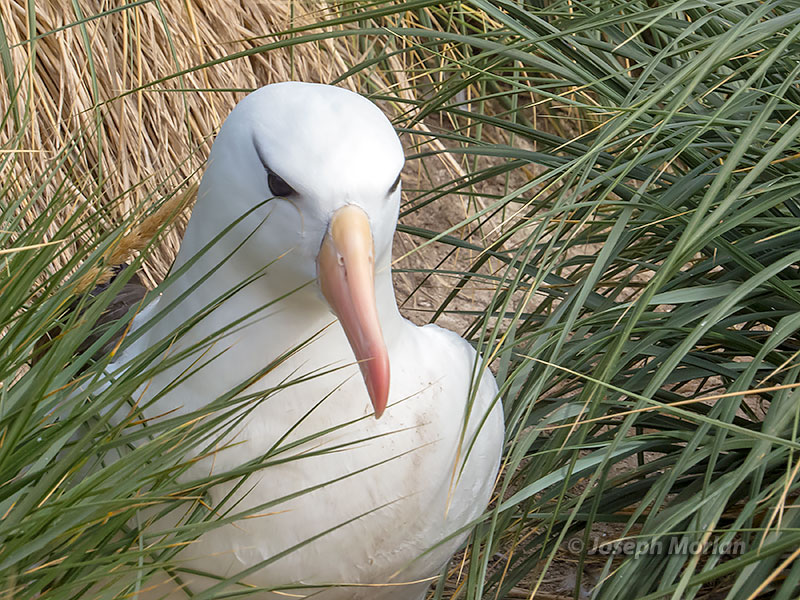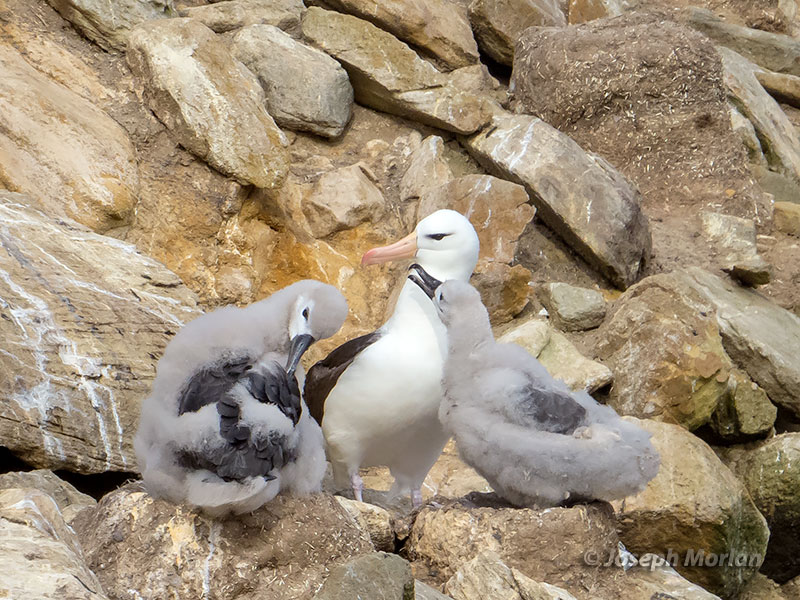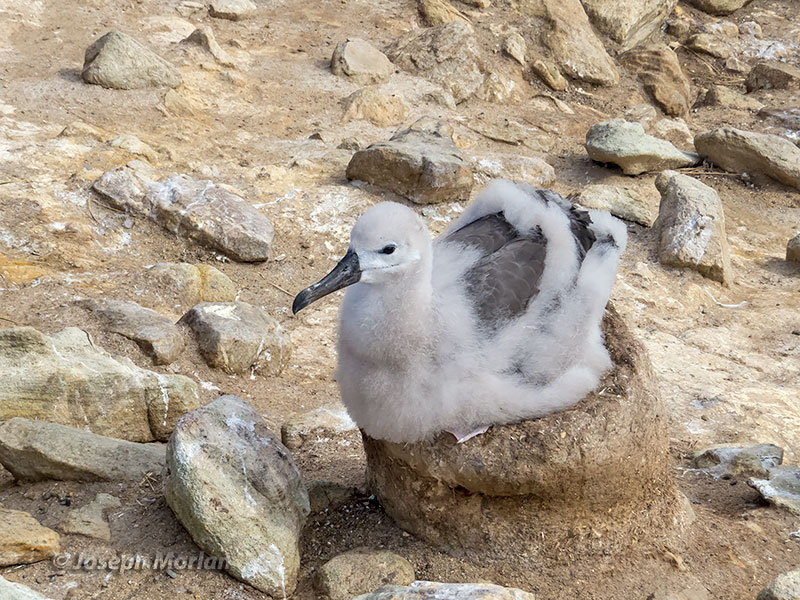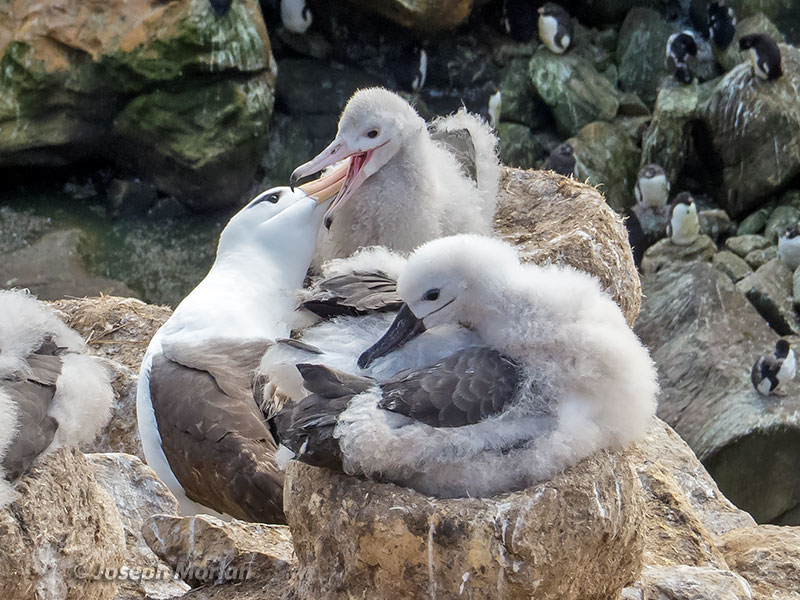



Adults may forage away from the colony for a day or more before returning to feed their chicks. This is an unnamed form breeding on the Falkland Islands. It is genetically distinct but otherwise indistinguishable from other dark-eyed populations. Two subspecies are recognized. This is the widespread nominate race. It is largely replaced by the light-eyed T. m. impavida on Campbell Island and New Zealand, although some overlap has been reported. Some authors (e.g. IOC, HBW online, Birdlife International) consider Campbell Albatross to be a separate species. Both types occur together on Campbell Island where they may occasionally form mixed pairs. This species was formerly placed in the genus Diomedea, but moved with the other mollymawks into Thalassarche to maintain generic monophyly. Formerly considered "near threatened" the most recent IUCN assessment is "least concern." Canon PowerShot SX50 HS
References:
BirdLife International. 2017. Thalassarche melanophris. The IUCN Red List of Threatened Species 2017: e.T22698375A119512041. http://dx.doi.org/10.2305/IUCN.UK.2017-3.RLTS.T22698375A119512041.en. Downloaded on 09 May 2018.
Burg, T.M. & Croxall, J.P. (2001) Global relationships amongst Black-browed and Grey-headed albatrosses: analysis of population structure using mitochondrial DNA and microsatellites. Mol. Ecol. 10(11): 2647–2660.
Carboneras, C., Jutglar, F. & Kirwan, G.M. (2018). Black-browed Albatross (Thalassarche melanophris). In: del Hoyo, J., Elliott, A., Sargatal, J., Christie, D.A. & de Juana, E. (eds.). Handbook of the Birds of the World Alive. Lynx Edicions, Barcelona. (retrieved from https://www.hbw.com/node/52505 on 6 May 2018).
Jaramillo, A. (2003). Birds of Chile, Princeton Univ. Press, Princeton & Oxford.